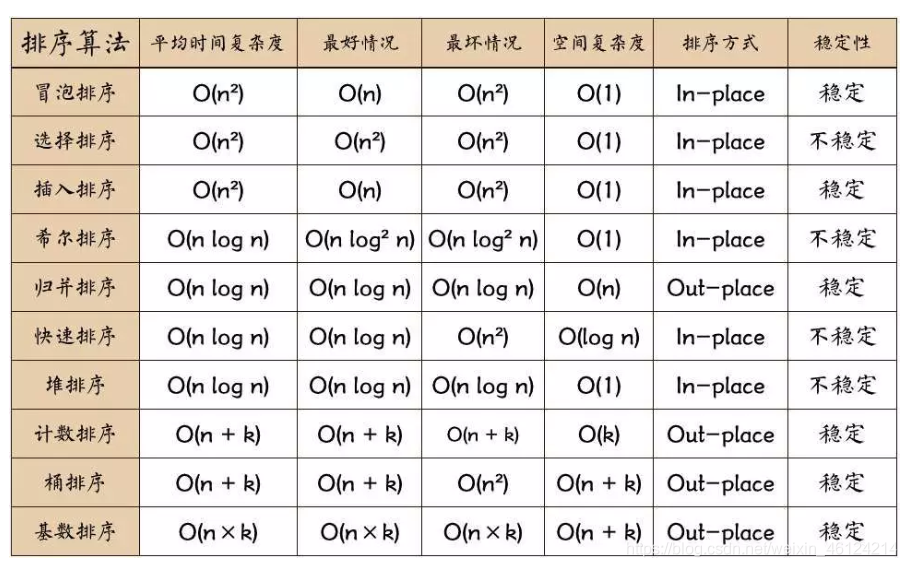:单片机排序算法大比拼:性能、时间复杂度全解析
发布时间: 2024-07-11 06:02:12 阅读量: 94 订阅数: 24 


排序算法_单片机程序_

# 1. 单片机排序算法概述
单片机排序算法是用于对单片机中的数据进行排序的一组算法。排序算法通过将数据元素按特定顺序排列,使数据更容易查找、处理和分析。在单片机中,排序算法通常用于处理小规模的数据集,例如传感器读数、控制参数或通信数据。
排序算法根据其工作原理和效率分为不同的类型。最常见的排序算法包括冒泡排序、选择排序和插入排序。这些算法各有优缺点,在不同的应用场景下具有不同的适用性。
# 2. 排序算法理论剖析
### 2.1 冒泡排序
#### 2.1.1 算法原理
冒泡排序是一种简单的排序算法,其基本思想是:将相邻的两个元素进行比较,如果顺序不正确,则交换它们。重复这一过程,直到没有元素需要交换。
#### 2.1.2 时间复杂度分析
冒泡排序的时间复杂度为 O(n^2),其中 n 为数组中的元素数量。这是因为,对于 n 个元素的数组,需要进行 n-1 次比较和交换。对于每个元素,需要进行 n-1 次比较,因此总共需要 n*(n-1) 次比较。
### 2.2 选择排序
#### 2.2.1 算法原理
选择排序是一种不稳定的排序算法,其基本思想是:在未排序的序列中找到最小(或最大)元素,并将其与序列中的第一个元素交换。然后,在剩余的未排序序列中重复这一过程,直到所有元素都已排序。
#### 2.2.2 时间复杂度分析
选择排序的时间复杂度也是 O(n^2),与冒泡排序相同。这是因为,对于 n 个元素的数组,需要进行 n-1 次比较和交换。对于每个元素,需要进行 n-1 次比较,因此总共需要 n*(n-1) 次比较。
### 2.3 插入排序
#### 2.3.1 算法原理
插入排序是一种稳定的排序算法,其基本思想是:将未排序的元素插入到已排序的序列中。首先,将第一个元素视为已排序的序列。然后,依次将剩余的元素与已排序序列进行比较,并将其插入到正确的位置。
#### 2.3.2 时间复杂度分析
插入排序的时间复杂度为 O(n^2),与冒泡排序和选择排序相同。这是因为,对于 n 个元素的数组,需要进行 n-1 次比较和交换。对于每个元素,需要进行 n-1 次比较,因此总共需要 n*(n-1) 次比较。
# 3.1 冒泡排序在单片机中的实现
#### 3.1.1 代码实现
```c
void bubbleSort(int *arr, int len) {
int i, j;
for (i = 0; i < len - 1; i++) {
for (j = 0; j < len - i - 1; j++) {
if (arr[j] > arr[j + 1]) {
int temp = arr[j];
arr[j] = arr[j + 1];
arr[j + 1] = temp;
}
}
}
}
```
#### 3.1.2 性能测试
**参数说明:**
* arr:待排序的数组
* len:数组长度
**代码逻辑分析:**
1. 外层循环(i)遍历数组,控制排序趟数。
2. 内层循环(j)在当前趟中比较相邻元素,将较大的元素后移。
3. 比较元素时,使用临时变量 temp 交换元素值,保证排序稳定性。
4. 经过 len - 1 趟排序后,数组中的元素从小到大排列。
**性能分析:**
* 时间复杂度:O(n^2),最坏和平均情况下都需要进行 n^2 次比较和交换操作。
* 空间复杂度:O(1),不需要额外的空间存储。
# 4. 排序算法性能比较
### 4.1 不同算法的性能对比
#### 4.1.1 时间复杂度比较
| 算法 | 时间复杂度 |
|---|---|
| 冒泡排序 | O(n²) |
| 选择排序 | O(n²) |
| 插入排序 | O(n²) |
从时间复杂度上看,三种算法均为 O(n²),这意味着随着数据规模的增大,算法执行时间将呈平方级增长。
#### 4.1.2 内存消耗比较
| 算法 | 内存消耗 |
|---|---|
| 冒泡排序 | O(1) |
| 选择排序 | O(1) |
| 插入排序 | O(1) |
从内存消耗上看,三种算法均为 O(1),这意味着算法执行过程中不会分配额外的内存空间。
### 4.2 不同数据规模下的性能影响
#### 4.2.1 数据规模较小时的性能表现
当数据规模较小时(例如,小于 100),三种算法的性能表现相差不大。
#### 4.2.2 数据规模较大时的性能表现
当数据规模较大时(例如,大于 1000),冒泡排序和选择排序的性能明显下降,而插入排序的性能相对较好。
### 4.3 性能比较总结
综合考虑时间复杂度和内存消耗,插入排序在数据规模较大时具有较好的性能表现。对于数据规模较小的情况,三种算法的性能差异不大,可以根据具体需求选择合适的算法。
**代码示例:**
```c
// 冒泡排序
void bubble_sort(int *arr, int len) {
for (int i = 0; i < len - 1; i++) {
for (int j = 0; j < len - i - 1; j++) {
if (arr[j] > arr[j + 1]) {
int temp = arr[j];
arr[j] = arr[j + 1];
arr[j + 1] = temp;
}
}
}
}
// 选择排序
void selection_sort(int *arr, int len) {
for (int i = 0; i < len - 1; i++) {
int min_index = i;
for (int j = i + 1; j < len; j++) {
if (arr[j] < arr[min_index]) {
min_index = j;
}
}
if (min_index != i) {
int temp = arr[i];
arr[i] = arr[min_index];
arr[min_index] = temp;
}
}
}
// 插入排序
void insertion_sort(int *arr, int len) {
for (int i = 1; i < len; i++) {
int key = arr[i];
int j = i - 1;
while (j >= 0 && arr[j] > key) {
arr[j + 1] = arr[j];
j--;
}
arr[j + 1] = key;
}
}
```
**逻辑分析:**
* **冒泡排序:**通过不断比较相邻元素并交换位置,将最大的元素逐个移动到数组末尾。
* **选择排序:**在未排序部分中找到最小元素,并将其与当前元素交换位置。
* **插入排序:**将当前元素插入到已排序部分的合适位置。
**参数说明:**
* `arr`:待排序数组
* `len`:数组长度
# 5. 单片机排序算法优化
### 5.1 优化冒泡排序
#### 5.1.1 优化思路
冒泡排序的优化主要集中在减少不必要的比较和交换操作上。以下是一些常见的优化思路:
- **短路优化:**在每次比较时,如果发现相邻元素已经有序,则直接跳过交换操作。
- **哨兵优化:**在数组末尾添加一个哨兵元素,使得在比较过程中,无需再判断是否到达数组末尾。
- **双向冒泡:**同时从数组两端向中间进行冒泡,提高排序效率。
#### 5.1.2 优化代码
```c
void bubbleSortOptimized(int arr[], int size) {
// 添加哨兵元素
arr[size] = INT_MAX;
int swapped;
do {
swapped = 0; // 标记是否发生交换
// 从数组末尾向中间进行冒泡
for (int i = size - 1; i >= 1; i--) {
if (arr[i] < arr[i - 1]) {
swap(&arr[i], &arr[i - 1]);
swapped = 1; // 标记发生交换
}
}
// 从数组开头向中间进行冒泡
for (int i = 1; i < size; i++) {
if (arr[i] < arr[i - 1]) {
swap(&arr[i], &arr[i - 1]);
swapped = 1; // 标记发生交换
}
}
} while (swapped); // 如果没有发生交换,则排序完成
// 移除哨兵元素
arr[size] = 0;
}
```
### 5.2 优化选择排序
#### 5.2.1 优化思路
选择排序的优化主要集中在减少不必要的比较操作上。以下是一些常见的优化思路:
- **最小值索引记录:**在每次比较过程中,记录当前最小值的索引,避免重复比较。
- **有序区优化:**将已经排序的部分作为有序区,后续比较时只比较有序区外的元素。
#### 5.2.2 优化代码
```c
void selectionSortOptimized(int arr[], int size) {
int minIdx; // 记录当前最小值的索引
for (int i = 0; i < size - 1; i++) {
minIdx = i; // 初始化最小值索引为当前索引
// 寻找有序区外的最小值
for (int j = i + 1; j < size; j++) {
if (arr[j] < arr[minIdx]) {
minIdx = j; // 更新最小值索引
}
}
// 如果最小值索引不为当前索引,则交换元素
if (minIdx != i) {
swap(&arr[i], &arr[minIdx]);
}
}
}
```
### 5.3 优化插入排序
#### 5.3.1 优化思路
插入排序的优化主要集中在减少不必要的移动操作上。以下是一些常见的优化思路:
- **二分查找插入:**使用二分查找算法在有序区中找到插入位置,减少移动操作。
- **哨兵优化:**在数组开头添加一个哨兵元素,使得在插入过程中,无需再判断是否到达数组开头。
#### 5.3.2 优化代码
```c
void insertionSortOptimized(int arr[], int size) {
// 添加哨兵元素
arr[-1] = INT_MIN;
for (int i = 1; i < size; i++) {
int key = arr[i]; // 待插入元素
// 使用二分查找找到插入位置
int left = -1;
int right = i - 1;
while (left < right) {
int mid = (left + right) / 2;
if (arr[mid] < key) {
left = mid + 1;
} else {
right = mid;
}
}
// 移动元素
for (int j = i; j > left; j--) {
arr[j] = arr[j - 1];
}
// 插入元素
arr[left + 1] = key;
}
// 移除哨兵元素
arr[-1] = 0;
}
```
# 6. 单片机排序算法应用实例
### 6.1 数字排序
**6.1.1 需求分析**
在单片机系统中,经常需要对数字数据进行排序,例如:
* 传感器数据排序:对采集到的传感器数据进行排序,以便于后续分析和处理。
* 数据统计排序:对统计数据进行排序,以便于生成报表和图表。
**6.1.2 代码实现**
```c
#include <stdio.h>
#include <stdlib.h>
// 冒泡排序函数
void bubble_sort(int *arr, int len) {
int i, j;
for (i = 0; i < len - 1; i++) {
for (j = 0; j < len - i - 1; j++) {
if (arr[j] > arr[j + 1]) {
int temp = arr[j];
arr[j] = arr[j + 1];
arr[j + 1] = temp;
}
}
}
}
int main() {
int arr[] = {5, 3, 1, 2, 4};
int len = sizeof(arr) / sizeof(arr[0]);
bubble_sort(arr, len);
for (int i = 0; i < len; i++) {
printf("%d ", arr[i]);
}
return 0;
}
```
### 6.2 字符串排序
**6.2.1 需求分析**
在单片机系统中,也需要对字符串数据进行排序,例如:
* 文件名排序:对文件系统中的文件名进行排序,以便于查找和管理。
* 文本处理排序:对文本数据进行排序,以便于提取关键词和生成摘要。
**6.2.2 代码实现**
```c
#include <stdio.h>
#include <stdlib.h>
#include <string.h>
// 字符串比较函数
int compare_strings(const void *a, const void *b) {
return strcmp((char *)a, (char *)b);
}
int main() {
char *arr[] = {"apple", "banana", "cherry", "dog", "elephant"};
int len = sizeof(arr) / sizeof(arr[0]);
qsort(arr, len, sizeof(char *), compare_strings);
for (int i = 0; i < len; i++) {
printf("%s ", arr[i]);
}
return 0;
}
```
0
0





